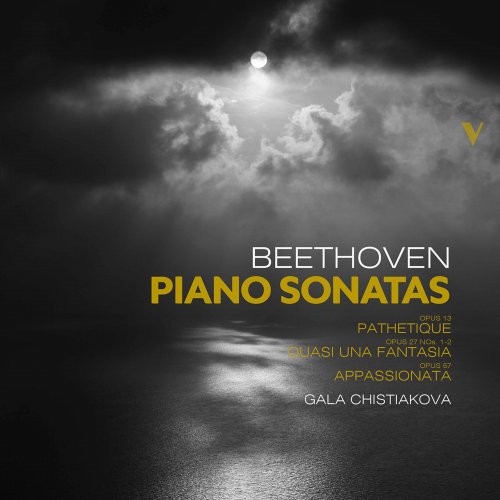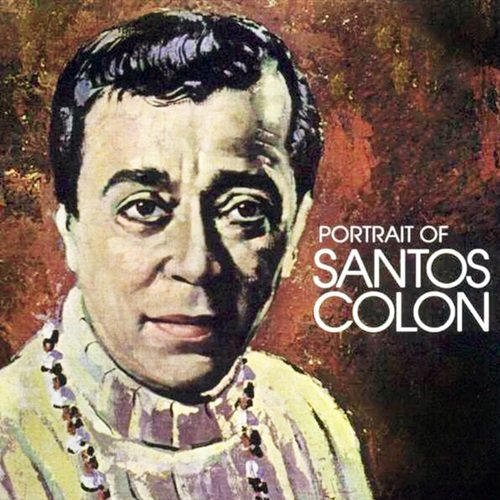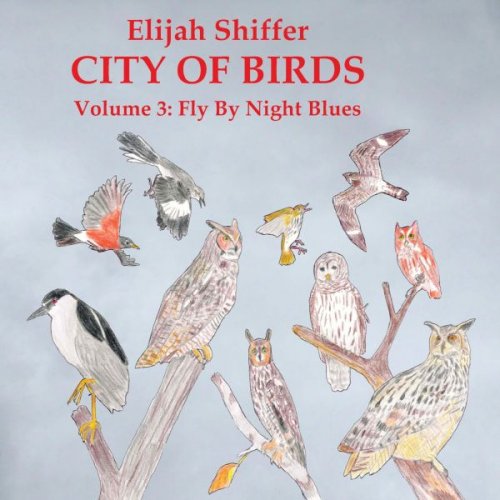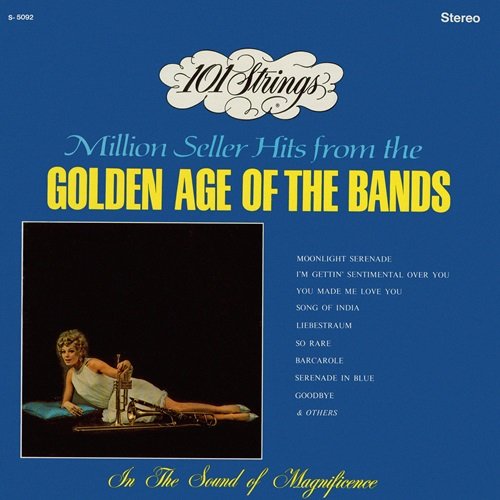Gala Chistiakova - Beethoven: Piano Sonatas, Opp. 13, 27 & 57 (2020) [Hi-Res]

Artist: Gala Chistiakova
Title: Beethoven: Piano Sonatas, Opp. 13, 27 & 57
Year Of Release: 2020
Label: OnClassical
Genre: Classical Piano
Quality: flac lossless / flac 24bits - 88.2kHz
Total Time: 01:19:57
Total Size: 242 mb / 1.1 gb
WebSite: Album Preview
TracklistTitle: Beethoven: Piano Sonatas, Opp. 13, 27 & 57
Year Of Release: 2020
Label: OnClassical
Genre: Classical Piano
Quality: flac lossless / flac 24bits - 88.2kHz
Total Time: 01:19:57
Total Size: 242 mb / 1.1 gb
WebSite: Album Preview
01. Piano Sonata No. 8 in C minor, Op. 13 "Pathétique": I. Grave - Allegro di molto e con brio
02. Piano Sonata No. 8 in C minor, Op. 13 "Pathétique": II. Adagio cantabile
03. Piano Sonata No. 8 in C minor, Op. 13 "Pathétique": III. Rondo. Allegro
04. Piano Sonata No. 13 in E-Flat Major, Op. 27 No. 1 "Quasi una fantasia": I. Andante
05. Piano Sonata No. 13 in E-Flat Major, Op. 27 No. 1 "Quasi una fantasia": II. Allegro molto e vivace
06. Piano Sonata No. 13 in E-Flat Major, Op. 27 No. 1 "Quasi una fantasia": III. Adagio con espressione - IV. Allegro vivace
07. Piano Sonata No. 14 in C-sharp Minor, Op. 27 No. 2 "Moonlight": I. Adagio sostenuto
08. Piano Sonata No. 14 in C-sharp Minor, Op. 27 No. 2 "Moonlight": II. Allegretto
09. Piano Sonata No. 14 in C-sharp Minor, Op. 27 No. 2 "Moonlight": III. Presto agitato
10. Piano Sonata No. 23 In F Minor, Op. 57 "Appassionata": I. Allegro assai
11. Piano Sonata No. 23 In F Minor, Op. 57 "Appassionata": II. Andante con moto
12. Piano Sonata No. 23 In F Minor, Op. 57 "Appassionata": III. Allegro ma non troppo - Presto
In the first decade of his career as a published composer, Ludwig van Beethoven completed an enormous amount of music. Some of the most beloved sonatas for piano belong to this prolific period, marked not only by the desire to be acknowledged as an emerging composer of his time, but also by wonderfully creative inspiration and innovation. All of these sonatas are crucial in the way Beethoven understood both musical forms and the possibilities of the piano as the new household instrument. The Sonata in C Minor, Op. 13 was published in 1799 by Eder as “Grande sonate pathétique” – a title not by Beethoven but by the publisher, and which the composer nonetheless liked (Eder found the piece’s dramatic sonorities greatly affecting). The frontispiece indicates that the work is composed for harpsichord or piano - to increase sales, since many people in Vienna still owned harpsichords (all the sonatas for piano that Beethoven published until then were sold as works written for both instruments). Here Beethoven experiments with novel ideas about form in the outer movements - innovations which will influence contemporaneous and future composers.
The Two Sonatas, Op. 27, composed in the year 1800, were subtitled by Beethoven “Sonata quasi una fantasia” for the freedom with which their structures were conceived. Both sonatas present unusual features – the first, in E-flat major, almost cyclical, structurally evokes a fantasy wherein different movements are played without interruption. The structure is made more complex by the return of slow movement at the end of the work, before the closing coda. The second sonata, in C-sharp minor, presents two movements in sonata form - the first an Adagio, and the second featuring unusual harmonic relations between the two main thematic blocks. Franz Liszt aptly proclaimed that the second movement, a simple minuet in the key of D-flat major in ABA form, is “a flower between two abysses.” The second sonata from Op. 27 was nicknamed Mondschein (“Moonlight”) by the German critic Ludwig Rellstab in 1835, as its first movement evoked in his mind the silvery moon reflecting on the placid Lake Lucerne.
Composed between 1804 and 1806, the Sonata in F Minor, Op. 57 was posthumously nicknamed “Appassionata” – a title given by the publisher of a four-hand version of the work in 1838, a title which still remains today. At the time of its composition, it was one of Beethoven’s most impressive works for the piano, perhaps matched in difficulty only by the Sonata Op. 53. Its nickname perfectly portrays the highly charged emotional content of the sonata’s framework. Dramatic dynamic contrasts in the outer movements create a compelling narrative, ending in a tragic, virtuosic coda. The andante movement is a series of variants based on the exponential development of rhythmic figurations.
Gala Chistiakova, a rising talent on the world scene, offers an original reading of these famous Beethoven works, with great refinement and riveting control.
The recordings was made by producer Alessandro Simonetto using two historical pairs of Brüel & Kjær microphones matched with more modern Prism Sound pres and converters equipments.
![Johannes Arzberger - Rebirth (2025) [Hi-Res] Johannes Arzberger - Rebirth (2025) [Hi-Res]](https://img.israbox.com/img/2025-12/29/83zqlzou5l7cgdoiuiy231rth.jpg)
![Singular - SINGÜLAR (2025) [Hi-Res] Singular - SINGÜLAR (2025) [Hi-Res]](https://www.dibpic.com/uploads/posts/2025-12/1766913064_h3d0mb26iq5fb_600.jpg)




![Fatty George - Fatty George meets Lionel Hampton & Beryl Bryden (2020) [Hi-Res] Fatty George - Fatty George meets Lionel Hampton & Beryl Bryden (2020) [Hi-Res]](https://www.dibpic.com/uploads/posts/2025-12/1767087774_fglh.jpg)

